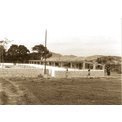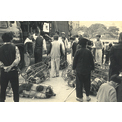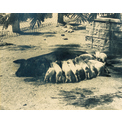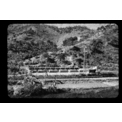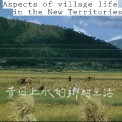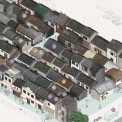 Collections
Collections A Partnership with the People: KAAA and Post-war Agricultural Hong Kong
A Partnership with the People: KAAA and Post-war Agricultural Hong Kong Agricultural Aid Projects
Agricultural Aid Projects Pig Raising Scheme
Pig Raising Scheme
In the first year of operation, KAAA’s attention was directed solely towards teaching the art of pig raising. Lawrence and Horace Kadoorie knew that pigs grew more rapidly than any other farm animals, and so the farmers would have the satisfaction of nurturing their rapidly growing capital. The brothers’ decision was also helped by the fact that there was a steady demand for pork in Hong Kong. All of these were to become the driving force behind the growth of the pig industry in post-war Hong Kong.
Interest-free loan for pigsty construction
KAAA was insistent that pigsties ought not be built on private land as ownership transfers would affect the piggery. To help farmers qualify for these loans, the District Offices found and secured crown land for construction.
Free sows
Two to three sows would be offered as breeding stock.
Loan for pig feed purchase
Loans were re-paid once litters were mature and ready to be sold at market.
Pigs to supplement vegetable growing
KAAA helped poor vegetable growers exploit a secondary source of income through pig rearing. Farmers could feed their pigs with waste vegetables and use the pig manure as a fertiliser. Breeding and farm management were also part of KAAA’s concern. Check out the “Paak Ngau Shek Experimental Farm” section.
Boar-on-demand
For a small charge, the Government supplied boars to mate with sows. This service was also available from local boar keepers. In 1959, the Government introduced artificial insemination to better protect swine from contagious diseases.
